PHOTO: J. Scott Applewhite/AP
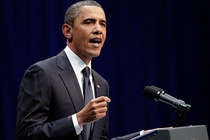 There is a river whose streams make glad the city of God,
There is a river whose streams make glad the city of God,
the holy place where the Most High dwells.
God is within her, she will not fall;
God will help her at break of day.
Psalm 46 (from President Obama’s speech)
President Obama delivered a powerful speech in Tuscon yesterday as he remembered those killed and wounded in Saturday’s shooting rampage and called Americans to respond to the tragedy in a way that would honor the victims. His words were eloquent and heartfelt. He spoke with the humility he recommended to all Americans.
After remembering each victim and recognizing those who assisted at the shooting scene and the medical staff who ministered to the wounded, Mr. Obama turned to inward reflection as well as the need to move forward.
Such a tragedy, similar to the sudden loss of a family member, moves us to reflection on our lives, how we treat others, and how we can change for the better in our public and private lives. Indeed, Mr. Obama’s words and presence created a feeling of intmacy and “family” among those listening to his words.
His speech helped me believe that change in political discourse is possible. Perhaps civility and respect in debate is not a lost cause. He sounded a call to work together for the common good, and as a good leader, helped us believe that we can do it.
Looking at the good qualities of our nation, government, and people in general through the eyes of the child, Christina Taylor Green, helped us see again the good in the world. He exhorted us not to look for an easy explanation or to point fingers at those who think differently than we do, but to search for answers in a way that in a way worthy of Christina.
Mr. Obama asked us to react in a way that lives up to the expectations of all our children. Using Scripture again, he referred to Job looking for light but finding only darkness. We cannot understand the presence of evil in the world, but we are responsible for how we live our lives combating the darkness in our own corner of the world.
I hope his words inspire us all, particularly those in Congress, to go forward willing to listen and to tackle the challenges we face without demonizing those with whom we disagree.
© Mary van Balen 2011


 “Getting ready for the snow storm?” I asked as I handed the customer her bag of Cuddle Duds long johns.
“Getting ready for the snow storm?” I asked as I handed the customer her bag of Cuddle Duds long johns. 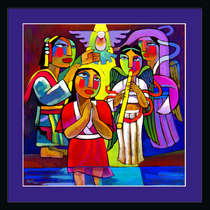
 As soon as Jesus was baptised he came up from the water, and suddenly the heavens opened and he saw the Spirit of God descending like a dove and coming down on him. And a voice spoke from heaven, This is my Son, the Beloved; my favour rests on him. Mt 3, 16-17
As soon as Jesus was baptised he came up from the water, and suddenly the heavens opened and he saw the Spirit of God descending like a dove and coming down on him. And a voice spoke from heaven, This is my Son, the Beloved; my favour rests on him. Mt 3, 16-17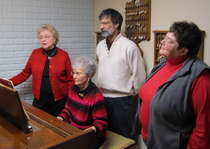

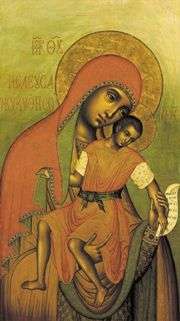
 The shepherds hurried away to Bethlehem and found Mary and Joseph, and the baby lying in the manger. When they saw the child they repeated what they had been told about him, and everyone who heard it was astonished at what the shepherds had to say. As for Mary, she treasured all these things and pondered them in her heart. And the shepherds went back glorifying and praising God for all they had heard and seen; it was exactly as they had been told. Lk 2, 16-20
The shepherds hurried away to Bethlehem and found Mary and Joseph, and the baby lying in the manger. When they saw the child they repeated what they had been told about him, and everyone who heard it was astonished at what the shepherds had to say. As for Mary, she treasured all these things and pondered them in her heart. And the shepherds went back glorifying and praising God for all they had heard and seen; it was exactly as they had been told. Lk 2, 16-20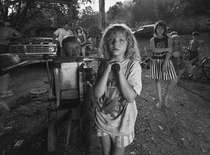
 I weep and my eyes dissolve in tears, since the comforter who could revive me is far away. My sons are in despair, the enemy has proved too strong. Mid-morning reading Lamentations 1:16
I weep and my eyes dissolve in tears, since the comforter who could revive me is far away. My sons are in despair, the enemy has proved too strong. Mid-morning reading Lamentations 1:16 Perhaps my discomfort with this feast has more to do with my unintentional complicity in the poverty cycle in my own country than with the plight of young boys 2,000 years ago. What can I change? How can I live in a way that does not contribute to the suffering of Holy Innocents in my own time and place? What can I do to contribute to the solution?
Perhaps my discomfort with this feast has more to do with my unintentional complicity in the poverty cycle in my own country than with the plight of young boys 2,000 years ago. What can I change? How can I live in a way that does not contribute to the suffering of Holy Innocents in my own time and place? What can I do to contribute to the solution?

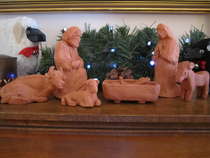
 “How small and gentle his coming was. He came as an infant. The night in which he came was noisy and crowded; it is unlikely that in the traffic and travelers to Bethlehem, the tiny wail of the newly born could be heard.
“How small and gentle his coming was. He came as an infant. The night in which he came was noisy and crowded; it is unlikely that in the traffic and travelers to Bethlehem, the tiny wail of the newly born could be heard.
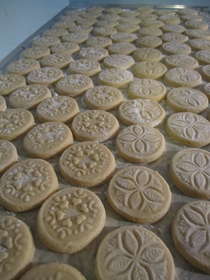 One tradition I never have difficulty keeping is having last minute preparations to do on Christmas Eve. Try as I might, I am never quite ready by December 24. This year I am close, though. Today I decided to bake more cookies than I had originally intended to make.
One tradition I never have difficulty keeping is having last minute preparations to do on Christmas Eve. Try as I might, I am never quite ready by December 24. This year I am close, though. Today I decided to bake more cookies than I had originally intended to make. 
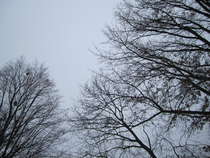 Why should I be honoured with a visit from the mother of my Lord? For the moment your greeting reached my ears, the child in my womb leapt for joy. Yes, blessed is she who believed that the promise made her by the Lord would be fulfilled. Lk 1, 43-45
Why should I be honoured with a visit from the mother of my Lord? For the moment your greeting reached my ears, the child in my womb leapt for joy. Yes, blessed is she who believed that the promise made her by the Lord would be fulfilled. Lk 1, 43-45 I was reminded, too, that I had good company in not perceiving God’s hand in my present life events, or knowing what lay ahead. I am asked to believe in God’s promise, I will be with you, and I, too, am blessed.
I was reminded, too, that I had good company in not perceiving God’s hand in my present life events, or knowing what lay ahead. I am asked to believe in God’s promise, I will be with you, and I, too, am blessed.